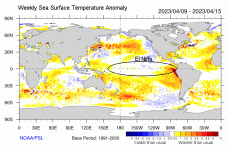Man-made borders cannot stop nature and natural hazards. However, nature and biodiversity are both essential in climate change mitigation and adaption, as well as in Disaster Risk Reduction (DRR). Successfully using Nature-based Solutions (NbS) for reducing disaster risk requires a way to classify the vast literature and make it easier to apply results. To facilitate this process, UNU-EHS researchers contributed to a paper clarifying the different types of NbS. The paper established common definitions and terminology to improve understanding across different sectors, disciplines and geographic locations. The authors analysed 114 existing articles on NbS approaches and came up with a way of grouping the different ways of using NbS to reduce disaster risk:
Nature-based Solutions for Disaster Risk Reduction create benefits for other approaches with different goals and targets
Examples of this first classification include biodiversity conservation and climate change adaptation. There are also approaches that do not directly aim at reducing disaster risk, but that still support it. The authors identify three categories of such approaches. Firstly, there are methods that focus on issues like managing the environment and mitigating climate change impacts. The second group includes restoration and conservation methods, whereas the last category includes different disciplines that can help with reducing disaster risk. Examples are urban planning and soil bioengineering.
The classification system looks at different types of geographic areas and the related natural hazards
Five main types of areas that experience different natural hazards were identified: high mountains, low mountains/lowlands, coastal areas, dry areas and volcanic areas. Three of those areas are categorized by how high above sea level they are. These locations experience hazards like rockfalls, landslides and floods (high mountains), floods, droughts, fires, and storms (low mountains and lowlands), and storms, erosion and tsunamis (coastal areas). Dry areas have droughts, desertification, and sandstorms, whereas volcanic areas can suffer from falling volcanic debris. Many of these hazards can be prevented from turning into a disaster when NbS are implemented.
Nature-based Solutions for Disaster Risk Reduction take into account climatic conditions and types of ecosystems
The successful implementation of NbS needs to take into consideration the climate and the vegetation that grows in an area. For example, the protective functions of trees in areas exposed to drought conditions would depend on how that tree species can cope with water scarcity. Looking at what kind of plants naturally grow in an area and what climate they thrive in can help with this. Our experts suggest grouping climate and ecosystems into five main categories to help understand the conditions and vegetation types that might be best suited for NbS.
Selecting the ideal Nature-based Solutions for Disaster Risk Reduction relies on the functions and services of an ecosystem in an area
There are two divisions that can be made. A first group of solutions use plants and trees to act as protective barriers against natural hazards. A second group uses other natural processes, such as water storage. Both, the protective barrier and such natural processes are examples of so-called ‘ecosystem services’, which are often combined by Nature-based Solutions.
Different Nature-based Solutions for Disaster Risk Reduction require different techniques
A first division can be made based on scale, differentiating between techniques that work on larger landscape levels and those that focus on smaller, specific sites. Next, techniques can be selected on whether they use flora and/or fauna, water, soil, landscape design, or a combination of these natural processes. A final consideration is whether a measure or technique is based on traditional or local knowledge.


